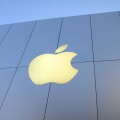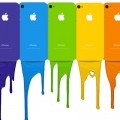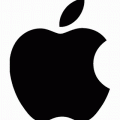Tech giant Apple’s latest product announcements will likely be music to the ears of those who think smaller is better. In its recent unveiling of new products staged at its Cupertino, Calif., headquarters, the company introduced a retro iPhone model and a new iPad model that pack powerful punches into smaller packages. It also revealed some interesting news on the programming, pricing and environmental fronts, as well.
Smaller (More Powerful) is Better
Apple’s two biggest announcements at its March 21 Town Hall involved products with smaller screens but more powerful programming. Apple fans who prefer smaller designs now have a new iPhone and iPad to choose form.
The new iPhone SE is billed by the company as the “most powerful 4-inch phone ever.” Starting at $399, it boasts the same processing power as the popular 6S. It also has the same graphics capabilities featured in the 6S model, as well as the 12 megapixel iSight camera. The new design is missing 3D Touch which, along with its larger size, sets the 6S apart. The new SE reportedly feels similar to the old iPhone 4 and boasts the more defined sides of the older model.
The new iPad Pro also offers a smaller profile. This 9.7-inch diagonal size business tablet has an increased contrast ratio and a 40% less-reflective screen than standard iPad Air 2 models. It’s also estimated to be about 25% brighter. The design is meant to enable the new iPad Pro to compete more effectively against competitor Microsoft’s Surface Pro. Prices for the new iPads start at $599 for the 32 GB design.
While the Apple Watch didn’t get much spotlight time during the rollout of new products, it did get a nod in the “smaller” department. Company officials announced a small price drop for the Sport model. The 38mm watch will now start at $299, which is down from $349. The company also rolled out a number of new bands designed to work with its Apple Watch models.
You Might Also Enjoy: Feds Unlock iPhone Without Help from Apple
Programming For Better Health
One of the biggest announcements at Apple’s unveiling was the introduction of CareKit. This Apple advancement is the latest in the company’s push into the health tech industry. The open-source platform is meant to enable developers to build apps that can help patients and their healthcare providers better manage chronic conditions by sharing information. The first apps that use the platform include ones that help Parkinson’s patients monitor their conditions at home, and one meant to streamline post-surgical discharge.
Updating the Backbone
Apple also rolled out iOS 9.3, the mobile OS that essentially powers all of Apple’s iPhone, iPad and iPod touch models. The significant update includes several new features, including Wi-Fi call support for Verizon customers, new 3D Touch shortcuts for existing apps, encryption for individual Notes, and a brand new “Night Shift” mode. This mode automatically alters the white balance on newer iPhones and iPads to a warmer spectrum to help improve sleep and reduce eye strain.
Staying Green
After earning a perfect scorecard in Greenpeace’s Clean Energy Index report last May, Apple announced another move to help it stay green. The company has rolled out “Liam,” a robot built specifically to deconstruct iPhones to repurpose such materials as lithium, cobalt, gold, copper and platinum. Liam is programmed to recycle iPhone 6 models and can do so at a rate of one phone every 11 seconds.
While Liam is a step in the right direction, Greenpeace’s Gary Cook says the robotic advancement might not be enough to create a real impact. After all, Apple sold an estimated 231 million phones in 2015 alone. Cook was quoted by Mac Rumors as saying the best move for Apple would be to make recycling easier for a human.






